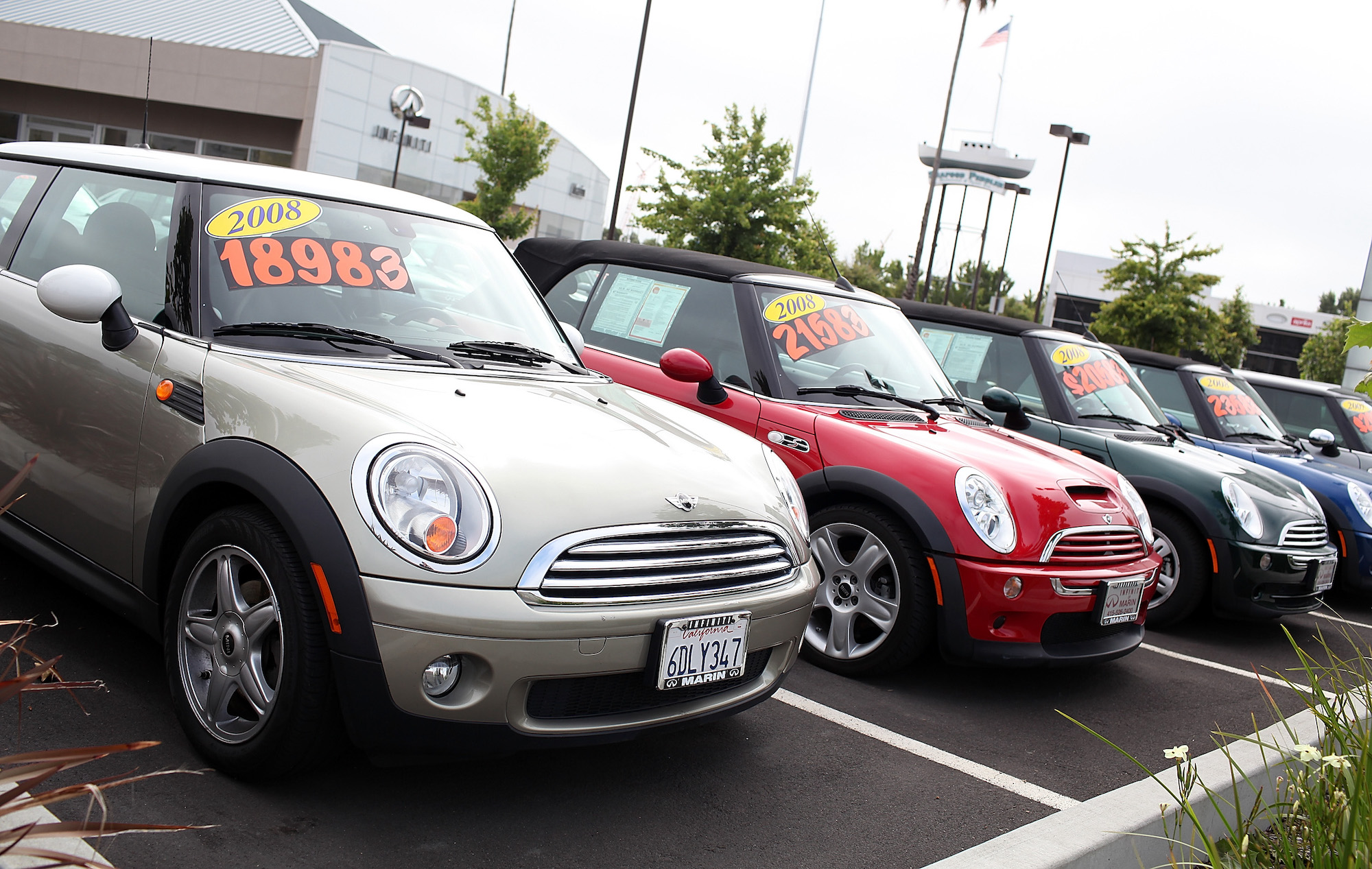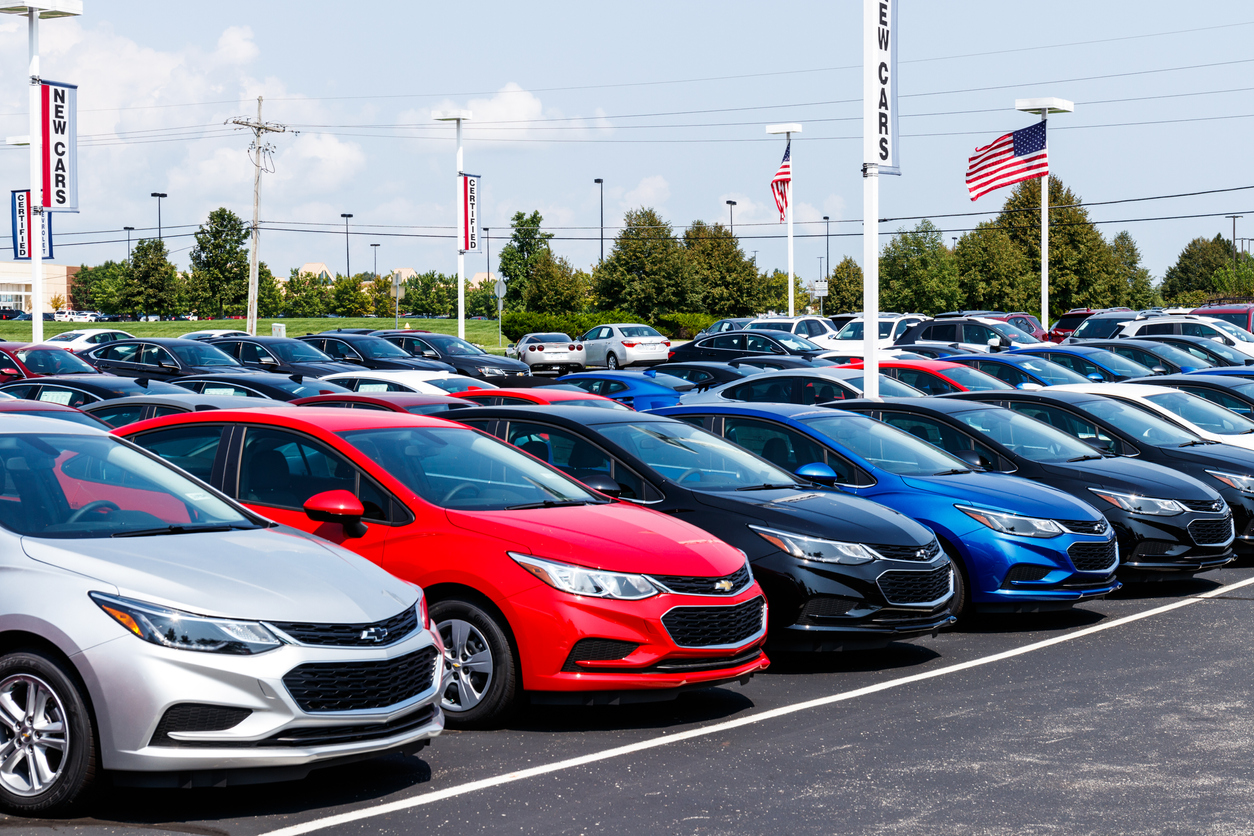Used Daycab Semi Trucks For Sale: Your Comprehensive Guide to Smart Acquisition pickup.truckstrend.com
In the dynamic world of commercial trucking, efficiency and cost-effectiveness are paramount. While brand-new semi trucks gleam with the promise of the latest technology, the savvy owner-operator or fleet manager often looks to the robust and reliable alternative: used daycab semi trucks. These workhorses of the road offer a compelling blend of affordability, immediate availability, and proven performance, making them an ideal choice for a wide array of short-haul, regional, and specialized transportation needs. This comprehensive guide will delve into everything you need to know about navigating the market for used daycab semi trucks, ensuring you make an informed and profitable decision.
What is a Daycab Semi Truck?
Used Daycab Semi Trucks For Sale: Your Comprehensive Guide to Smart Acquisition
Before diving into the used market, it’s essential to understand what defines a daycab semi truck. Unlike their long-haul counterparts equipped with spacious sleeper berths, daycabs are designed for routes that allow drivers to return home at the end of their shift. They feature a compact cab without an integrated sleeping compartment, resulting in a shorter wheelbase, lighter tare weight, and often better maneuverability.
Daycabs are the backbone of many industries, including:
- Local and Regional Hauling: Transporting goods within a specific geographical area.
- Construction: Hauling materials like sand, gravel, and equipment.
- Waste Management: Operating refuse collection vehicles.
- Port Drayage: Moving shipping containers to and from ports.
- Agricultural Transport: Hauling farm produce or supplies over shorter distances.
- Specialized Applications: Such as towing, heavy equipment transport, or delivery services requiring a powerful tractor.

Their design prioritizes agility, visibility, and operational efficiency for daily use, making them distinct from sleeper trucks built for multi-day journeys.
Why Choose a Used Daycab? The Benefits Unpacked
Opting for a used daycab semi truck presents a compelling array of advantages, particularly for businesses mindful of their bottom line:

- Significant Cost Savings: This is arguably the biggest draw. New semi trucks can cost upwards of $150,000 to $200,000 or more. A well-maintained used daycab, even a few years old, can be acquired for a fraction of that price, freeing up capital for other business investments or operational expenses.
- Slower Depreciation: A new truck experiences its steepest depreciation in the first few years. By purchasing used, you bypass this initial sharp decline in value, meaning your investment retains its value more effectively over time.
- Immediate Availability: Unlike ordering a new truck which can involve long lead times for manufacturing and delivery, used trucks are typically available for immediate purchase and deployment, allowing you to quickly scale your operations.
- Proven Performance and Reliability: Many used daycabs come with a track record. With proper maintenance records, you can assess the truck’s reliability and identify any recurring issues, offering a degree of predictability that a brand-new, untested model might not.
- Lower Insurance Costs: Generally, older and less expensive vehicles incur lower insurance premiums, contributing to overall operational savings.
- Access to Discontinued Models or Features: Sometimes, a specific model or engine configuration that is no longer produced new might be ideal for your niche application. The used market provides access to a wider variety of specifications.

Key Considerations When Buying Used Daycabs
Purchasing a used semi truck requires thorough due diligence. Here’s what you need to scrutinize:
- Mileage and Engine Hours: While mileage is a common indicator, engine hours can be more telling, especially for trucks that idle frequently or operate in stop-and-go conditions (like drayage or construction). Look for a balance. A truck with high mileage but consistent highway use might be in better shape than one with lower mileage but extensive idling or severe duty cycles.
- Maintenance Records (CRITICAL!): This is non-negotiable. Request detailed service history, including oil changes, major repairs, component replacements, and preventative maintenance schedules. A well-documented history indicates a responsible previous owner and can save you from future headaches.
- Engine Type and Horsepower: Match the engine’s power output (HP) and torque to your typical load weight and terrain. Common engines include Cummins, Detroit Diesel, PACCAR, and Volvo. Ensure it’s suitable for your application.
- Transmission: Decide between manual and automatic transmissions. Automatics offer easier driving and can reduce driver fatigue, while manuals might offer better fuel efficiency for experienced drivers and are often more robust for heavy-duty applications.
- Axle Configuration and Ratios: The most common is a 6×4 (tandem rear axles, both driven) for heavy hauling. A 4×2 (single drive axle) is lighter and more fuel-efficient for lighter loads. Understand the axle ratios, as they affect fuel economy and pulling power.
- Gross Vehicle Weight Rating (GVWR) and Gross Combination Weight Rating (GCWR): Ensure the truck’s ratings align with the weight of the loads you intend to haul and the trailers you’ll pull.
- Tire Condition: Tires are a significant expense. Check tread depth, uneven wear patterns (indicating alignment or suspension issues), and age (DOT date code).
- Brake System: Inspect brake pads, drums/rotors, air lines, and compressor. Test the air brakes thoroughly.
- Frame and Suspension: Look for cracks, bends, or significant rust on the frame rails. Check for leaks in air springs, worn leaf springs, or damaged suspension components.
- Electrical System: Test all lights, gauges, HVAC, and auxiliary systems. Look for frayed wires or signs of previous electrical issues.
- Cab Interior and Features: Assess the seat condition, dashboard functionality, and overall cleanliness. While less critical for performance, a well-maintained interior often reflects overall care.
- Emissions Systems (DEF, DPF): Understand the emissions standards the truck meets. Older models might not have DEF (Diesel Exhaust Fluid) systems, which can be simpler to maintain but might face restrictions in certain areas. Newer models will have DPF (Diesel Particulate Filter) and DEF, which require specific maintenance.
- Pre-Purchase Inspection (PPI): Always get an independent, qualified mechanic to perform a comprehensive inspection, even if buying from a reputable dealer. This is your best defense against hidden problems.
Where to Find Used Daycab Semi Trucks
The market for used daycabs is extensive. Here are the primary sources:
- Commercial Truck Dealerships: Both new truck dealers (who take trade-ins) and dedicated used truck dealers offer a wide selection, often with reconditioning services, limited warranties, and financing options.
- Online Marketplaces: Websites like TruckPaper.com, CommercialTruckTrader.com, and MyLittleSalesman.com are central hubs for listings from dealers and private sellers nationwide.
- Auctions: Ritchie Bros., IronPlanet, and other auction houses regularly feature large inventories of used trucks from fleets, rental companies, and bankruptcies. Prices can be lower, but "as-is, where-is" conditions mean higher risk.
- Private Sellers: Check classifieds (online and local), Facebook Marketplace, or local truck stops. Prices might be more negotiable, but you’ll have fewer protections and no reconditioning.
- Fleet Sales: Larger trucking companies often cycle out their older equipment, selling directly to the public. These trucks often have meticulous maintenance records.
- Rental Companies: Companies like Penske or Ryder frequently sell off their used rental fleets, which are typically well-maintained.
The Buying Process: A Step-by-Step Guide
- Define Your Needs and Budget: Before looking, know your application (type of hauling, average weight, terrain), your maximum budget (including potential initial repairs, registration, insurance), and your desired specifications (engine, transmission, axle configuration).
- Research and Locate: Use the sources mentioned above to find trucks that match your criteria. Filter by make, model, year, mileage, and price.
- Initial Screening: Review photos, read descriptions carefully, and ask sellers for additional information or specific photos if anything is unclear. Eliminate trucks that don’t meet your basic requirements or raise immediate red flags.
- Thorough Inspection: Schedule a physical inspection. Beyond your own visual check, arrange for a professional pre-purchase inspection by a trusted, independent mechanic specializing in heavy trucks.
- Due Diligence: Obtain the VIN (Vehicle Identification Number) and run a history report (e.g., from NMVTIS or other commercial vehicle history services). Verify the maintenance records.
- Test Drive: Take the truck for a test drive under various conditions, if possible. Listen for unusual noises, check brake performance, steering, and transmission shifting. Pay attention to how the engine performs under load.
- Negotiation: Armed with your inspection report and market research, negotiate the price. Be prepared to walk away if the deal isn’t right.
- Financing and Insurance: Secure financing if needed. Many commercial lenders specialize in truck financing. Obtain insurance quotes before finalizing the purchase.
- Paperwork and Transfer of Ownership: Ensure all titles, bills of sale, and necessary documents are correctly filled out and transferred according to your state’s regulations.
Tips for a Successful Purchase
- Set a Realistic Budget: Don’t just budget for the purchase price. Account for taxes, registration, insurance, initial maintenance, and potential immediate repairs.
- Don’t Rush: The right truck will come along. Patience is key to avoiding hasty, regrettable decisions.
- Prioritize Maintenance History: A well-maintained older truck is often a better investment than a newer one with a spotty service record.
- Get a Professional Inspection: This is the single most important piece of advice. A good mechanic can identify issues that could cost you thousands down the line.
- Understand Emissions Regulations: Be aware of the emissions standards in your operating area.
- Network: Talk to other owner-operators or fleet managers for recommendations on trucks, mechanics, and sellers.
Potential Challenges and Solutions
- Hidden Mechanical Problems: Challenge: Used trucks can hide expensive issues. Solution: A comprehensive pre-purchase inspection is your strongest defense. Consider a limited warranty if available from a dealer.
- Financing Difficulties: Challenge: Securing financing for older or higher-mileage trucks can be harder. Solution: Explore specialized commercial truck lenders or consider a larger down payment.
- Finding the "Right" Truck: Challenge: The perfect truck matching all your criteria might not be immediately available. Solution: Be patient, broaden your search geographically, and be slightly flexible on non-essential features.
- Emissions System Failures: Challenge: DPF or DEF system issues can be costly. Solution: Review maintenance records specifically for these systems. Ensure they are functioning correctly during inspection and test drive.
Sample Price Table for Used Daycab Semi Trucks
Please note that these are estimated price ranges and can vary significantly based on make, model, engine, transmission, specific features, geographical location, market demand, and the overall economic climate. Always conduct your own research for current market values.
| Age Range (Years) | Condition | Estimated Price Range (USD) | Typical Mileage Range | Key Considerations |
| :—————- | :——– | :————————- | :——————– | :—————————————————————————————————————————————————————————————————————————————————————————————————————————————————————————————————————————————————————————————————————————————————————————————————————————————————————————————————————————————————————————————————————————————————————————————————————————————————————————————————————————————————————————————————————————————————————————————————————————————————————————————————————————————————————————————————————————————————————————————————————————————————————————————————————————————————————————————————————————————————————————————————————————————————————————————————————————————————————————————————————————————————————————————————————————————————————————————————————————————————————————————————————————————————————————————————————————————————————————————————————————————————————————————————————————————————————————————————————————————————————————————————————————————————————————————————————————————————————————————————————————————————————————————————————————————————————————————————————————————————————————————————————————————————————————————————————————————————————————————————————————————————————————————————————————————————————————————————————————————————————————————————————————————————————————————————————————————————————————————————————————————————————————————————————————————————————————————————————————————————————————————————————————————————————————————————————————————————————————————————————————————————————————————————————————————————————————————————————————————————————————————————————————————————————————————————————————————————————————————————————————————————————————————————————————————————————————————————————————————————————————————————————————————————————————————————————————————————————————————————————————————————————————————————————————————————————————————————————————————————————————————————————————————————————————————————————————————————————————————————————————————————————————————————————————————————————————————————————————————————————————————————————————————————————————————————————————————————————————————————————————————————————————————————————————————————————————————————————————————————————————————————————————————————————————————————————————————————————————————————————————————————————————————————————————————————————————————————————————————————————————————————————————————————————————————————————————————————————————————————————————————————————————————————————————————————————————————————————————————————————————————————————————————————————————————————————————————————————————————————————————————————————————————————————————————————————————————————————————————————————————————————————————————————————————————————————————————————————————————————————————————————————————————————————————————————————————————————————————————————————————————————————————————————————————————————————————————————————————————————————————————————————————————————————————————————————————————————————————————————————————————————————————————————————————————————————————————————————————————————————————————————————————————————————————————————————————————————————————————————————————————————————————————————————————————————————————————————————————————————————————————————————————————————————————————————————————————————————————————————————————————————————————————————————————————————————————————————————————————————————————————————————————————————————————————————————————————————————————————————————————————————————————————————————————————————————————————————————————————————————————————————————————————————————————————————————————————————————————————————————————————————————————————————————————————————————————————————————————————————————————————————————————————————————————————————————————————————————————————————————————————————————————————————————————————————————————————————————————————————————————————————————————————————————————————————————————————————————————————————————————————————————————————————————————————————————————————————————————————————————————————————————————————————————————————————————————————————————————————————————————————————————————————————————————————————————————————————————————————————————————————————————————————————————————————————————————————————————————————————————————————————————————————————————————————————————————————————————————————————————————————————————————————————————————————————————————————————————————————————————————————————————————————————————————————————————————————————————————————————————————————————————————————————————————————————————————————————————————————————————————————————————————————————————————————————————————————————————————————————————————————————————————————————————————————————————————————————————————————————————————————————————————————————————————————————————————————————————————————————————————————————————————————————————————————————————————————————————————————————————————————————————————————————————————————————————————————————————————————————————————————————————————————————————————————————————————————————————————————————————————————————————————————————————————————————————————————————————————————————————————————————————————————————————————————————————————————————————————————————————————————————————————————————————————————————————————————————————————————————————————————————————————————————————————————————————————————————————————————————————————————————————————————————————————————————————————————————————————————————————————————————————————————————————————————————————————————————————————————————————————————————————————————————————————————————————————————————————————————————————————————————————————————————————————————————————————————————————————————————————————————————————————————————————————————————————————————————————————————————————————————————————————————————————————————————————————————————————————————————————————————————————————————————————————————————————————————————————————————————————————————————————————————————————————————————————————————————————————————————————————————————————————————————————————————————————————————————————————————————————————————————————————————————————————————————————————————————————————————————————————————————————————————————————————————————————————————————————————————————————————————————————————————————————————————————————————————————————————————————————————————————————————————————————————————————————————————————————————————————————————————————————————————————————————————————————————————————————————————————————————————————————————————————————————————————————————————————————————————————————————————————————————————————————————————————————————————————————————————————————————————————————————————————————————————————————————————————————————————————————————————————————————————————————————————————————————————————————————————————————————————————————————————————————————————————————————————————————————————————————————————————————————————————————————————————————————————————————————————————————————————————————————————————————————————————————————————————————————————————————————————————————————————————————————————————————————————————————————————————————————————————————————————————————————————————————————————————————————————————————————————————————————————————————————————————————————————————————————————————————————————————————————————————————————————————————————————————————————————————————————————————————————————————————————————————————————————————————————————————————————————————————————————————————————————————————————————————————————————————————————————————————————————————————————————————————————————————————————————————————————————————————————————————————————————————————————————————————————————————————————————————————————————————————————————————————————————————————————————————————————————————————————————————————————————————————————————————————————————————————————————————————————————————————————————————————————————————————————————————————————————————————————————————————————————————————————————————————————————————————————————————————————————————————————————————————————————————————————————————————————————————————————————————————————————————————————————————————————————————————————————————————————————————————————————————————————————————————————————————————————————————————————————————————————————————————————————————————————————————————————————————————————————————————————————————————————————————————————————————————————————————————————————————————————————————————————————————————————————————————————————————————————————————————————————————————————————————————————————————————————————————————————————————————————————————————————————————————————————————————————————————————————————————————————————————————————————————————————————————————————————————————————————————————————————————————————————————————————————————————————————————————————————————————————————————————————————————————————————————————————————————————————————————————————————————————————————————————————————————————————————————————————————————————————————————————————————————————————————————————————————————————————————————————————————————————————————————————————————————————————————————————————————————————————————————————————————————————————————————————————————————————————————————————————————————————————————————————————————————————————————————————————————————————————————————————————————————————————————————————————————————————————————————————————————————————————————————————————————————————————————————————————————————————————————————————————————————————————————————————————————————————————————————————————————————————————————————————————————————————————————————————————————————————————————————————————————————————————————————————————————————————————————————————————————————————————————————————————————————————————————————————————————————————————————————————————————————————————————————————————————————————————————————————————————————————————————————————————————————————————————————————————————————————————————————————————————————————————————————————————————————————————————————————————————————————————————————————————————————————————————————————————————————————————————————————————————————————————————————————————————————————————————————————————————————————————————————————————————————————————————————————————————————————————————————————————————————————————————————————————————————————————————————————————————————————————————————————————————————————————————————————————————————————————————————————————————————————————————————————————————————————————————————————————————————————————————————————————————————————————————————————————————————————————————————————————————————————————————————————————————————————————————————————————————————————————————————————————————————————————————————————————————————————————————————————————————————————————————————————————————————————————————————————————————————————————————————————————————————————————————————————————————————————————————————————————————————————————————————————————————————————————————————————————————————————————————————————————————————————————————————————————————————————————————————————————————————————————————————————————————————————————————————————————————————————————————————————————————————————————————————————————————————————————————————————————————————————————————————————————————————————————————————————————————————————————————————————————————————————————————————————————————————————————————————————————————————————————————————————————————————————————————————————————————————————————————————————————————————————————————————————————————————————————————————————————————————————————————————————————————————————————————————————————————————————————————————————————————————————————————————————————————————————————————————————————————————————————————————————————————————————————————————————————————————————————————————————————————————————————————————————————————————————————————————————————————————————————————————————————————————————————————————————————————————————————————————————————————————————————————————————————————————————————————————————————————————————————————————————————————————————————————————————————————————————————————————————————————————————————————————————————————————————————————————————————————————————————————————————————————————————————————————————————————————————————————————————————————————————————————————————————————————————————————————————————————————————————————————————————————————————————————————————————————————————————————————————————————————————————————————————————————————————————————————————————————————————————————————————————————————————————————————————————————————————————————————————————————————————————————————————————————————————————————————————————————————————————————————————————————————————————————————————————————————————————————————————————————————————————————————————————————————————————————————————————————————————————————————————————————————————————————————————————————————————————————————————————————————————————————————————————————————————————————————————————————————————————————————————————————————————————————————————————————————————————————————————————————————————————————————————————————————————————————————————————————————————————————————————————————————————————————————————————————————————————————————————————————————————————————————————————————————————————————————————————————————————————————————————————————————————————————————————————————————————————————————————————————————————————————————————————————————————————————————————————————————————————————————————————————————————————————————————————————————————————————————————————————————————————————————————————————————————————————————————————————————————————————————————————————————————————————————————————————————————————————————————————————————————————————————————————————————————————————————————————————————————————————————————————————————————————————————————————————————————————————————————————————————————————————————————————————————————————————————————————————————————————————————————————————————————————————————————————————————————————————————————————————————————————————————————————————————————————————————————————————————————————————————————————————————————————————————————————————————————————————————————————————————————————————————————————————————————————————————————————————————————————————————————————————————————————————————————————————————————————————————————————————————————————————————————————————————————————————————————————————————————————————————————————————————————————————————————————————————————————————————————————————————————————————————————————————————————————————————————————————————————————————————————————————————————————————————————————————————————————————————————————————————————————————————————————————————————————————————————————————————————————————————————————————————————————————————————————————————————————————————————————————————————————————————————————————————————————————————————————————————————————————————————————————————————————————————————————————————————————————————————————————————————————————————————————————————————————————————————————————————————————————————————————————————————————————————————————————————————————————————————————————————————————————————————————————————————————————————————————————————————————————————————————————————————————————————————————————————————————————————————————————————————————————————————————————————————————————————————————————————————————————————————————————————————————————————————————————————————————————————————————————————————————————————————————————————————————————————————————————————————————————————————————————————————————————————————————————————————————————————————————————————————————————————————————————————————————————————————————————————————————————————————————————————————————————————————————————————————————————————————————————————————————————————————————————————————————————————————————————————————————————————————————————————————————————————————————————————————————————————————————————————————————————————————————————————————————————————————————————————————————————————————————————————————————————————————————————————————————————————————————————————————————————————————————————————————————————————————————————————————————————————————————————————————————————————————————————————————————————————————————————————————————————————————————————————————————————————————————————————————————————————————————————————————————————————————————————————————————————————————————————————————————————————————————————————————————————————————————————————————————————————————————————————————————————————————————————————————————————————————————————————————————————————————————————————————————————————————————————————————————————————————————————————————————————————————————————————————————————————————————————————————————————————————————————————————————————————————————————————————————————————————————————————————————————————————————————————————————————————————————————————————————————————————————————————————————————————————————————————————————————————————————————————————————————————————————————————————————————————————————————————————————————————————————————————————————————————————————————————————————————————————————————————————————————————————————————————————————————————————————————————————————————————————–## Used Daycab Semi Trucks For Sale: Your Guide to a Smart Acquisition
In the high-stakes world of commercial transportation, efficiency and cost-effectiveness are paramount. While brand-new semi trucks gleam with the promise of cutting-edge technology, the astute owner-operator or fleet manager often finds superior value in the robust and reliable alternative: used daycab semi trucks. These indispensable workhorses of the road offer a compelling blend of affordability, immediate availability, and proven performance, making them an ideal choice for a wide array of short-haul, regional, and specialized transportation needs. This comprehensive guide will equip you with the knowledge and actionable insights necessary to confidently navigate the market for used daycab semi trucks, ensuring you make an informed and profitable decision.
Understanding the Daycab Advantage
Before exploring the used market, it’s crucial to grasp what distinguishes a daycab semi truck. Unlike their long-haul counterparts equipped with spacious sleeper berths, daycabs are specifically designed for routes that allow drivers to return home at the end of their shift. They feature a compact cab without an integrated sleeping compartment, resulting in a shorter wheelbase, lighter tare weight, and often superior maneuverability in urban environments or tight loading docks.
Daycabs are the backbone of numerous industries, including:
- Local and Regional Hauling: Transporting goods within a specific geographical area or across state lines over shorter distances.
- Construction & Demolition: Hauling materials like sand, gravel, asphalt, and heavy equipment.
- Waste Management: Serving as the power unit for refuse collection vehicles or transfer trailers.
- Port Drayage: Efficiently moving shipping containers to and from bustling ports and intermodal yards.
- Agricultural Transport: Hauling farm produce, livestock, or supplies over shorter distances.
- Specialized Applications: Such as heavy equipment towing, flatbed operations, or delivery services requiring a powerful tractor without the need for overnight accommodation.
Their design prioritizes agility, visibility, and operational efficiency for daily use, making them a distinct and valuable asset compared to sleeper trucks built for multi-day journeys.
The Compelling Benefits of Choosing a Used Daycab
Opting for a used daycab semi truck presents a compelling array of advantages, particularly for businesses keen on optimizing their capital expenditure and operational costs:
- Significant Cost Savings: This is often the primary motivator. New semi trucks can command prices upwards of $150,000 to $200,000 or more. A well-maintained used daycab, even a few years old, can be acquired for a fraction of that price, freeing up substantial capital for other business investments, working capital, or immediate operational needs.
- Reduced Depreciation Impact: A new truck experiences its steepest depreciation in the first few years of ownership. By purchasing used, you bypass this initial sharp decline in value, meaning your investment retains its value more effectively over time and offers a more predictable resale value.
- Immediate Availability: Unlike ordering a new truck, which can involve lengthy lead times for manufacturing, customization, and delivery, used trucks are typically available for immediate purchase and deployment. This allows you to quickly expand your fleet or replace an existing unit without significant downtime.
- Proven Performance and Reliability: Many used daycabs come with a verifiable track record. With access to proper maintenance records, you can assess the truck’s historical reliability and identify any recurring issues, offering a degree of predictability that a brand-new, untested model might not.
- Lower Insurance Costs: Generally, older and less expensive vehicles incur lower insurance premiums, contributing to overall operational savings and improving your profit margins.
- Access to Diverse Specifications: The used market offers a vast array of makes, models, engine configurations, and features, including those that might be discontinued in new truck production. This allows you to find a truck with very specific characteristics perfectly suited to your niche application.
Critical Considerations When Purchasing a Used Daycab
Acquiring a used semi truck demands meticulous due diligence. Here’s a comprehensive checklist of what you need to scrutinize:
- Mileage and Engine Hours: While mileage is a common indicator, engine hours can be more telling, especially for trucks that idle frequently or operate in stop-and-go conditions (e.g., drayage, waste management). Look for a balance. A truck with high highway mileage but consistent maintenance might be in better shape than one with lower mileage but extensive idling or severe duty cycles.
- Maintenance Records (CRITICAL!): This cannot be overstated. Demand detailed service history, including oil changes, major component replacements (e.g., turbo, injectors, transmission), preventative maintenance schedules, and any significant repairs. A well-documented history indicates a responsible previous owner and significantly reduces your risk of unexpected breakdowns.
- Engine Type and Horsepower: Ensure the engine’s power output (HP) and torque are appropriate for your typical load weights, hauling distances, and the terrain you’ll encounter. Common engines include Cummins, Detroit Diesel, PACCAR, Volvo, and MaxxForce (International).
- Transmission Type: Decide between manual (stick shift) and automatic (automated manual transmission or fully automatic). Automatics offer easier driving, reduce driver fatigue, and can be more appealing to a broader range of drivers. Manuals, while requiring more skill, can offer marginally better fuel efficiency for experienced operators and are often more robust in certain heavy-duty applications.
- Axle Configuration and Ratios: The most common configuration for heavy hauling is a 6×4 (tandem rear axles, both driven). A 4×2 (single drive axle) is lighter and more fuel-efficient for lighter loads or specific applications. Understand the axle ratios, as they directly impact fuel economy and pulling power.
- Gross Vehicle Weight Rating (GVWR) and Gross Combination Weight Rating (GCWR): Verify that the truck’s ratings align with the maximum weight of the loads you intend to haul and the combined weight of the truck and any trailers you’ll pull. Exceeding these limits is illegal and dangerous.
- Tire Condition: Tires are a significant ongoing expense. Inspect tread depth across all tires, look for uneven wear patterns (which can indicate alignment or suspension issues), and check the DOT date code to assess their age.
- Brake System: Thoroughly inspect brake pads/